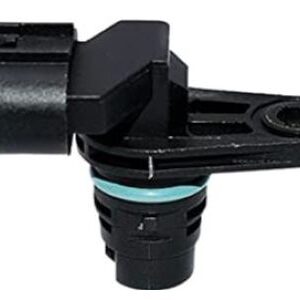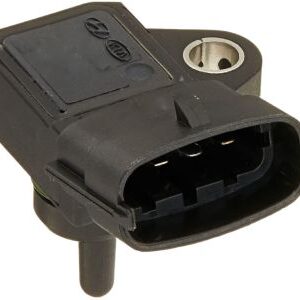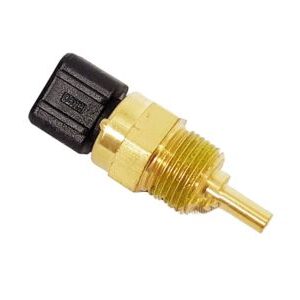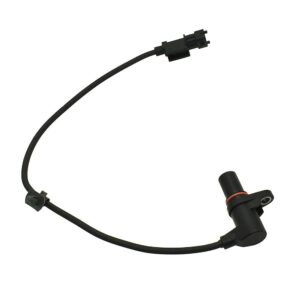Title: Oil Pressure Switch: A Guardian of Engine Lubrication
Introduction:
Amidst the complexities of engine operation, there exists a silent sentinel safeguarding one of the most critical aspects of automotive health—the oil pressure switch. Often overlooked but essential, this small yet mighty component plays a vital role in monitoring engine lubrication and ensuring optimal performance. In this blog, we’ll delve into the world of oil pressure switches, uncovering their function, importance, and the indispensable role they play in preserving engine integrity.
Understanding the Oil Pressure Switch:
The oil pressure switch, also known as the oil pressure sensor or sender, is a specialized electronic device typically located near the engine’s oil pump or oil filter housing. Its primary function is to monitor the oil pressure within the engine’s lubrication system and provide feedback to the vehicle’s onboard computer or gauge cluster.
Functionality:
But how does the oil pressure switch fulfill its duty? As the engine operates, the oil pump circulates engine oil throughout the lubrication system, ensuring vital components are properly lubricated and cooled. The oil pressure switch continuously monitors the oil pressure, generating an electrical signal that corresponds to the pressure detected. This signal is then transmitted to the vehicle’s computer or gauge cluster, where it is displayed to the driver or used to trigger warning indicators if the oil pressure falls outside of the normal operating range.
Importance:
The importance of oil pressure switches in modern engines cannot be overstated. These unassuming components serve as the first line of defense against potential engine damage due to inadequate lubrication or oil starvation. By detecting and responding to changes in oil pressure, oil pressure switches provide critical feedback to the driver or vehicle’s computer, allowing for timely intervention and prevention of catastrophic engine failure.
Key Functions of Oil Pressure Switches:
1. Oil Pressure Monitoring: The primary function of oil pressure switches is to monitor the oil pressure within the engine’s lubrication system and provide real-time feedback to the driver or vehicle’s computer.
2. Warning Indication: Oil pressure switches can trigger warning lights or messages on the dashboard if the oil pressure falls below safe operating limits, alerting the driver to potential issues.
3. Engine Protection: By detecting abnormalities in oil pressure, oil pressure switches help protect the engine from damage by ensuring proper lubrication of vital components and preventing oil starvation.
Maintenance and Replacement:
Proper maintenance of oil pressure switches is essential to ensure accurate readings and reliable engine performance. Over time, oil pressure switches may become contaminated with dirt, debris, or oil residue, leading to inaccurate readings or failure. Regular inspection, cleaning, and testing of oil pressure switches as part of routine maintenance can help prevent issues and ensure proper function. If problems arise, such as persistent warning indicators or erratic oil pressure readings, professional diagnosis and replacement of the oil pressure switch may be necessary to restore proper operation.
Conclusion:
In conclusion, oil pressure switches may be small in size, but their impact on engine performance and longevity is significant. As the guardians of engine lubrication, oil pressure switches provide critical feedback on oil pressure, allowing for timely intervention and prevention of potential damage. So, the next time you hit the road, take comfort in knowing that your vehicle’s oil pressure switch is silently standing guard, ensuring the health and integrity of your engine’s lubrication system.
In stock (can be backordered)
$12,851.68
Title: Oil Pressure Switch: A Guardian of Engine Lubrication
Introduction:
Amidst the complexities of engine operation, there exists a silent sentinel safeguarding one of the most critical aspects of automotive health—the oil pressure switch. Often overlooked but essential, this small yet mighty component plays a vital role in monitoring engine lubrication and ensuring optimal performance. In this blog, we’ll delve into the world of oil pressure switches, uncovering their function, importance, and the indispensable role they play in preserving engine integrity.
Understanding the Oil Pressure Switch:
The oil pressure switch, also known as the oil pressure sensor or sender, is a specialized electronic device typically located near the engine’s oil pump or oil filter housing. Its primary function is to monitor the oil pressure within the engine’s lubrication system and provide feedback to the vehicle’s onboard computer or gauge cluster.
Functionality:
But how does the oil pressure switch fulfill its duty? As the engine operates, the oil pump circulates engine oil throughout the lubrication system, ensuring vital components are properly lubricated and cooled. The oil pressure switch continuously monitors the oil pressure, generating an electrical signal that corresponds to the pressure detected. This signal is then transmitted to the vehicle’s computer or gauge cluster, where it is displayed to the driver or used to trigger warning indicators if the oil pressure falls outside of the normal operating range.
Importance:
The importance of oil pressure switches in modern engines cannot be overstated. These unassuming components serve as the first line of defense against potential engine damage due to inadequate lubrication or oil starvation. By detecting and responding to changes in oil pressure, oil pressure switches provide critical feedback to the driver or vehicle’s computer, allowing for timely intervention and prevention of catastrophic engine failure.
Key Functions of Oil Pressure Switches:
1. Oil Pressure Monitoring: The primary function of oil pressure switches is to monitor the oil pressure within the engine’s lubrication system and provide real-time feedback to the driver or vehicle’s computer.
2. Warning Indication: Oil pressure switches can trigger warning lights or messages on the dashboard if the oil pressure falls below safe operating limits, alerting the driver to potential issues.
3. Engine Protection: By detecting abnormalities in oil pressure, oil pressure switches help protect the engine from damage by ensuring proper lubrication of vital components and preventing oil starvation.
Maintenance and Replacement:
Proper maintenance of oil pressure switches is essential to ensure accurate readings and reliable engine performance. Over time, oil pressure switches may become contaminated with dirt, debris, or oil residue, leading to inaccurate readings or failure. Regular inspection, cleaning, and testing of oil pressure switches as part of routine maintenance can help prevent issues and ensure proper function. If problems arise, such as persistent warning indicators or erratic oil pressure readings, professional diagnosis and replacement of the oil pressure switch may be necessary to restore proper operation.
Conclusion:
In conclusion, oil pressure switches may be small in size, but their impact on engine performance and longevity is significant. As the guardians of engine lubrication, oil pressure switches provide critical feedback on oil pressure, allowing for timely intervention and prevention of potential damage. So, the next time you hit the road, take comfort in knowing that your vehicle’s oil pressure switch is silently standing guard, ensuring the health and integrity of your engine’s lubrication system.
| Warehouse | Inventory at warehouse 2 |
|---|




Get E-mail updates about our latest products and special offers.
Sensors and More is Jamaica’s ultimate online auto parts store. Established in 2020, we specialize in genuine electrical parts for Japanese, Read more…
Reviews
There are no reviews yet.